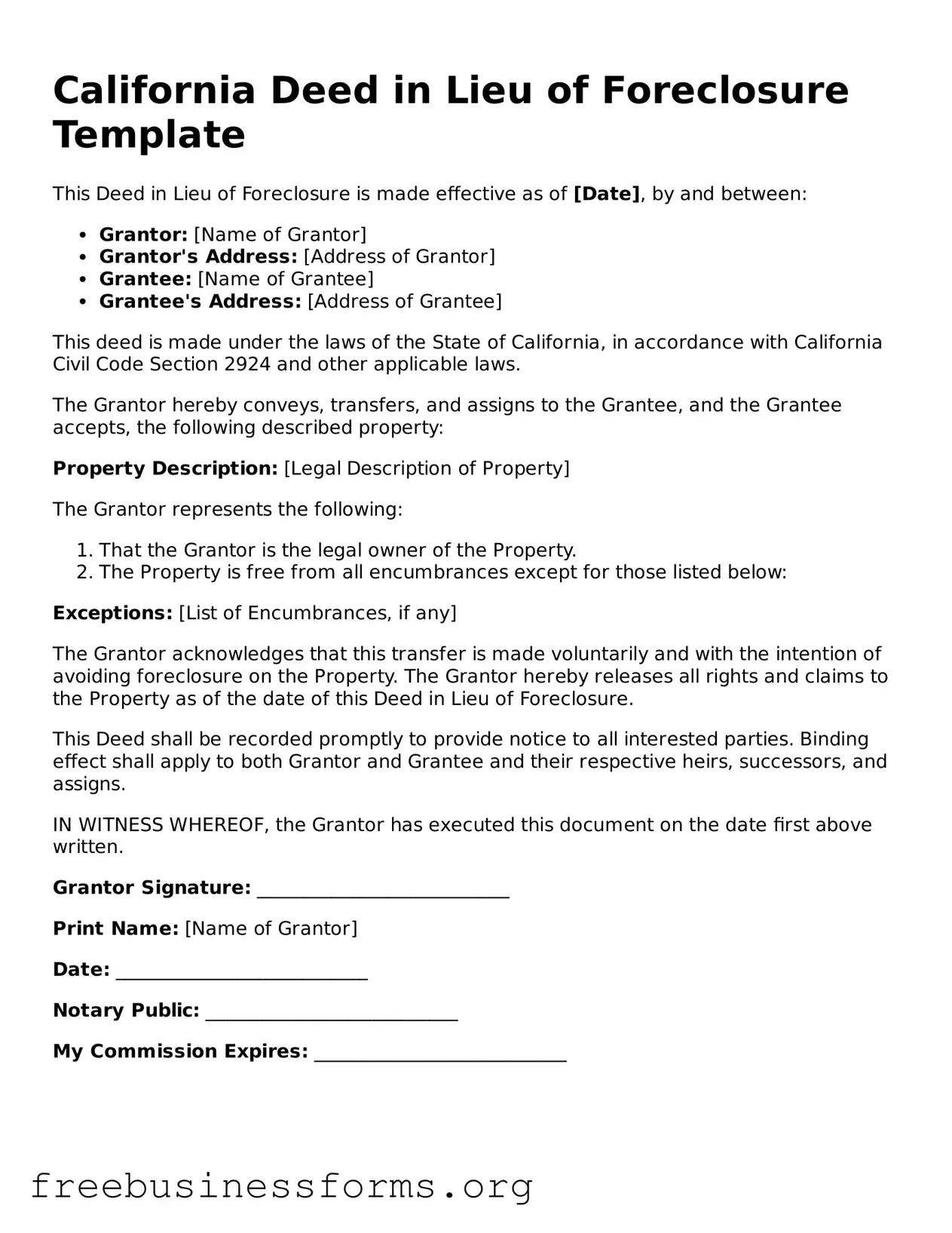California Deed in Lieu of Foreclosure Template
This Deed in Lieu of Foreclosure is made effective as of [Date], by and between:
- Grantor: [Name of Grantor]
- Grantor's Address: [Address of Grantor]
- Grantee: [Name of Grantee]
- Grantee's Address: [Address of Grantee]
This deed is made under the laws of the State of California, in accordance with California Civil Code Section 2924 and other applicable laws.
The Grantor hereby conveys, transfers, and assigns to the Grantee, and the Grantee accepts, the following described property:
Property Description: [Legal Description of Property]
The Grantor represents the following:
- That the Grantor is the legal owner of the Property.
- The Property is free from all encumbrances except for those listed below:
Exceptions: [List of Encumbrances, if any]
The Grantor acknowledges that this transfer is made voluntarily and with the intention of avoiding foreclosure on the Property. The Grantor hereby releases all rights and claims to the Property as of the date of this Deed in Lieu of Foreclosure.
This Deed shall be recorded promptly to provide notice to all interested parties. Binding effect shall apply to both Grantor and Grantee and their respective heirs, successors, and assigns.
IN WITNESS WHEREOF, the Grantor has executed this document on the date first above written.
Grantor Signature: ___________________________
Print Name: [Name of Grantor]
Date: ___________________________
Notary Public: ___________________________
My Commission Expires: ___________________________
